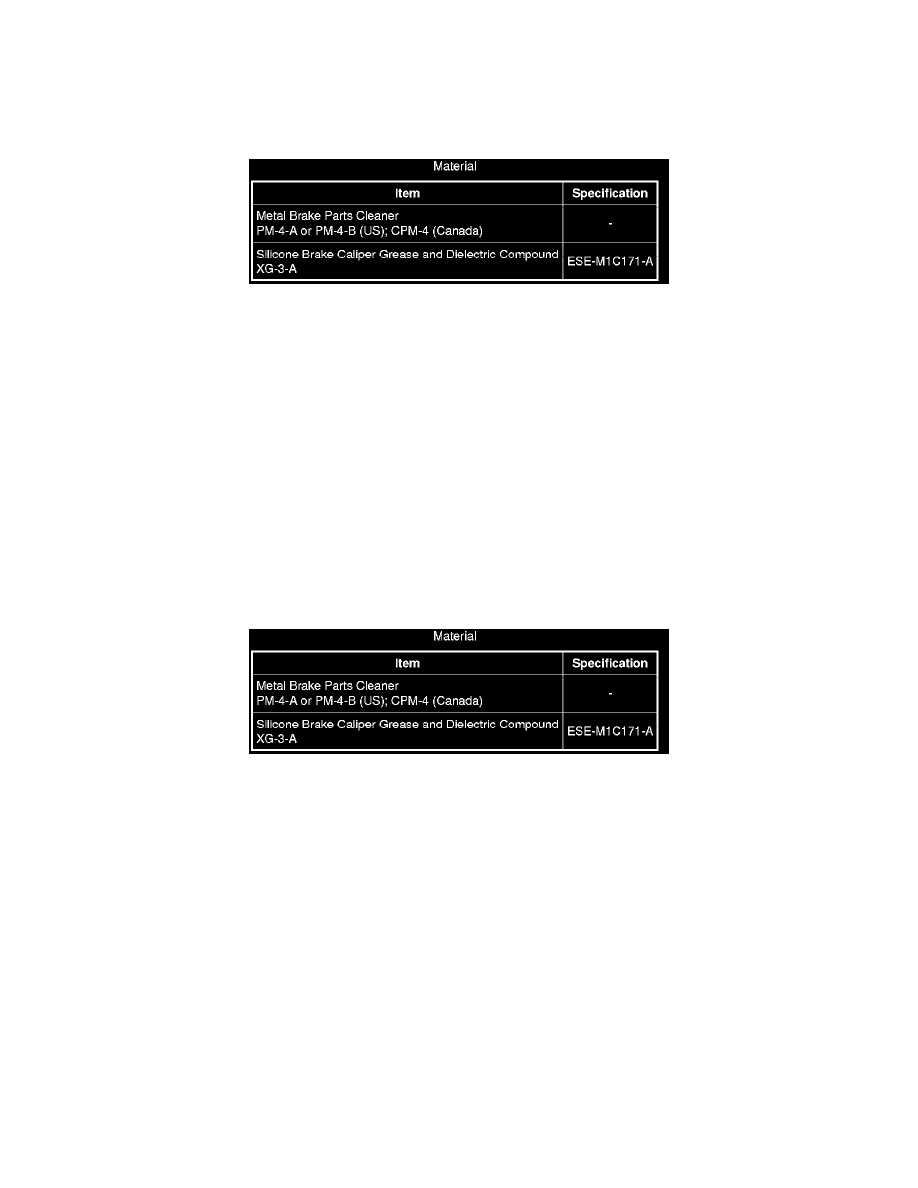Taurus X AWD V6-3.5L (2009)

2. Inspect the brake flexible hoses for cracks, leaks and swelling during brake application or any other signs of damage.
-
Install a new brake flexible hose if the hose shows signs of softening, cracking or other damage.
Brake Master Cylinder
Brake System Inspection
Brake Master Cylinder
NOTE: During normal operation of the brake master cylinder, the fluid level in the brake master cylinder reservoir will fall during brake application and
rise during release. The returning brake fluid creates a slight turbulance in the master cylinder reservoir. This is a normal condition and indicates that the
compensator ports are not clogged. Clogged compensator ports may cause the brakes to hang up or not fully release. The net fluid level (such as after
brake application and release) will remain unchanged. Fluid level will decrease with pad wear.
NOTE: A trace of brake fluid will exist on the booster shell below the master cylinder mounting flange. This results from the normal lubricating action
of the master cylinder bore and seal.
1. Inspect the brake master cylinder for fluid leaks.
-
Install a new master cylinder or brake fluid reservoir if signs of excessive leaking are present.
-
To check for correct brake master cylinder operation, refer to Component Tests See: Testing and Inspection/Component Tests and General
Diagnostics.
Brake Booster
Brake System Inspection
Brake Booster
1. Inspect the brake booster for excessive corrosion or damage. Inspect the vacuum hoses for leaks and kinks.
-
Install a new brake booster if signs of excessive corrosion or damage is found.
-
Repair or replace vacuum hoses as necessary.
-
To check for correct brake booster operation, refer to Component Tests See: Testing and Inspection/Component Tests and General
Diagnostics.
